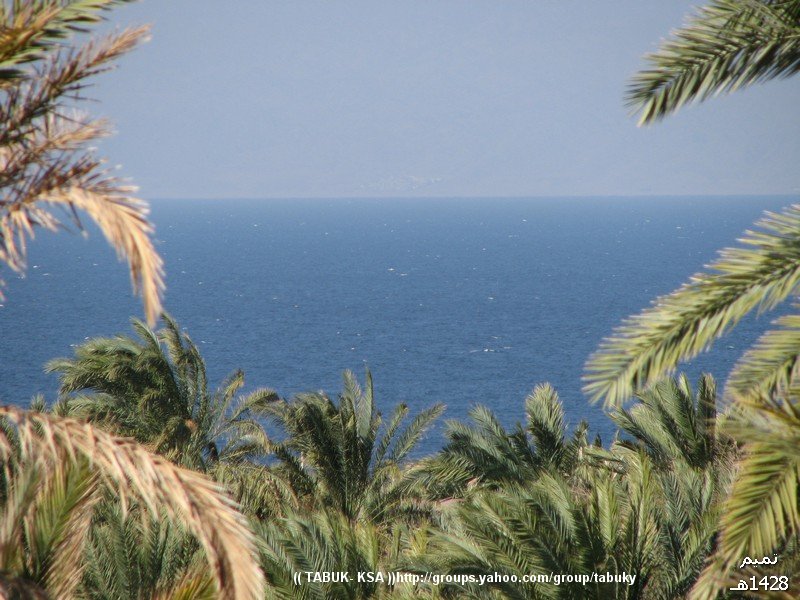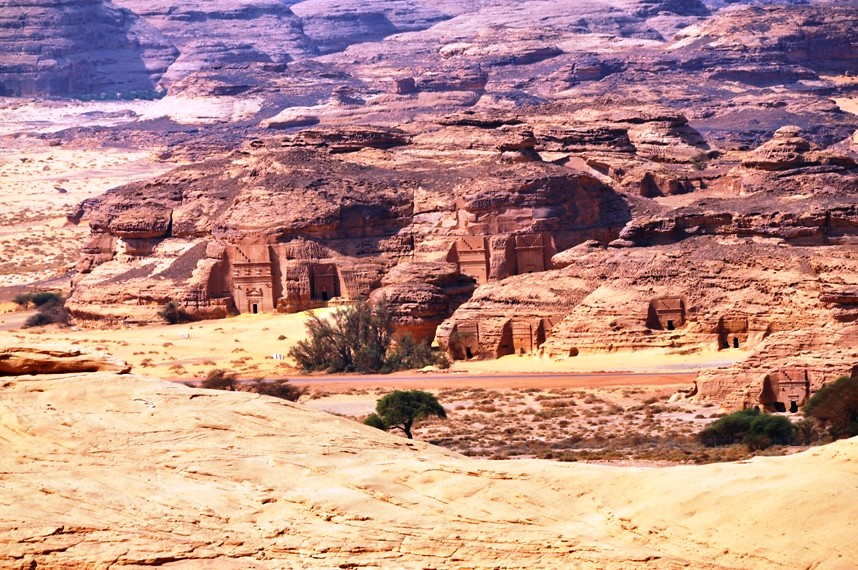ArabianEmpires&Caliphates
SENIOR MEMBER

- Joined
- Aug 2, 2016
- Messages
- 2,377
- Reaction score
- 4
- Country
- Location
Steppe in Northern KSA:


Umluj
wheat harvest in Al-Shabha












Al-Wajh city.






You are very much welcome. Yes, I love the architecture. It is mostly Hijazi but also Najdi and other regional architectures. Sadly nowadays most people prefer modern architecture and it is easier to built and less time-consuming. Many of the old artists are a dying breed as well. Sad.
Not a huge fan of this either. That is not really a thing in KSA as tourism has been such a small thing until recently. So no Dubai's and such areas although that also has its charm and Dubai has an old area as well.
You are very welcome any time.
June, July and August are the hottest months in KSA. May and September can also be hot. But it depends on region and what one is used to and if you can handle heat. For a person from say Finland it would be difficult the first few days (weeks) but for people from the region, South Asia, South East Asia, Southern Europe, Latin America etc. it would not be much of a trouble. Humidity is mostly a thing in the coastal areas and the mountainous areas in the South but here the temperature is much lower. In the center (Najd) the temperatures are higher but due to much lower humidity (very little) the heat is different if you understand what I mean. In Bangladesh you have a very tropical climate for instance and little variety in temperature between day and night. In an arid climate (which most of KSA has) there can be big differences. it is another type of heat so to speak.
Also have in mind that unlike in say Bangladesh, it can get quite cold in KSA during the winter, spring and autumn. Snow fall is common in large parts of the country. That, without knowing it, is hardly ever the case in Bangladesh but I might be wrong here. As an example. Of course nothing like Siberia but it can get genuinely cold.
Best time for travel is definitely spring and autumn (March, April, May, September, October November) but one can obviously travel in the summer too but temperatures (like most places in the region) will be a challenge for those not liking temperatures above 30 degrees. 35-38 is normal. Often above 40 degrees as well. In some instances even 45 depending on the day and region. So in the middle of the day with a sharp sun and 40 degrees it is probably not the best idea to do some sightseeing in the Rub' al-Khali for instance, lol, unless you are hardcore.


Umluj
wheat harvest in Al-Shabha












Al-Wajh city.






No man I like heritage a lot. The photos of older parts of your cities you posted makes me feel like want to go there now. Those older buildings with their balconies made out of timber are just gorgeous. Also the village photos with the village streets with stone pavement are just awesome.
What I meant was modern tourist cities like Phuket, Hong Kong like places where there are too many modern futuristic looking buildings and man made tourist attractions just put me off.
When I was in Madinah, I stayed in a hotel right next to the Masjid Nababi. I didn't like those parts of the city TBH because of too many modern hotels and buildings but we were taken on a guided tour on the other parts of the city where you can get the vibe of older times. Also went to see mount uhud, I didn't want to come back. Inshallah I want to go back, this time not really for Hajj but probably for tourism. I just need to find a long holiday.
I went hajj in 2014 around September and I had no issues with the heat, is that your hotter times or cooler times?
You are very much welcome. Yes, I love the architecture. It is mostly Hijazi but also Najdi and other regional architectures. Sadly nowadays most people prefer modern architecture and it is easier to built and less time-consuming. Many of the old artists are a dying breed as well. Sad.
Not a huge fan of this either. That is not really a thing in KSA as tourism has been such a small thing until recently. So no Dubai's and such areas although that also has its charm and Dubai has an old area as well.
You are very welcome any time.
June, July and August are the hottest months in KSA. May and September can also be hot. But it depends on region and what one is used to and if you can handle heat. For a person from say Finland it would be difficult the first few days (weeks) but for people from the region, South Asia, South East Asia, Southern Europe, Latin America etc. it would not be much of a trouble. Humidity is mostly a thing in the coastal areas and the mountainous areas in the South but here the temperature is much lower. In the center (Najd) the temperatures are higher but due to much lower humidity (very little) the heat is different if you understand what I mean. In Bangladesh you have a very tropical climate for instance and little variety in temperature between day and night. In an arid climate (which most of KSA has) there can be big differences. it is another type of heat so to speak.
Also have in mind that unlike in say Bangladesh, it can get quite cold in KSA during the winter, spring and autumn. Snow fall is common in large parts of the country. That, without knowing it, is hardly ever the case in Bangladesh but I might be wrong here. As an example. Of course nothing like Siberia but it can get genuinely cold.
Best time for travel is definitely spring and autumn (March, April, May, September, October November) but one can obviously travel in the summer too but temperatures (like most places in the region) will be a challenge for those not liking temperatures above 30 degrees. 35-38 is normal. Often above 40 degrees as well. In some instances even 45 depending on the day and region. So in the middle of the day with a sharp sun and 40 degrees it is probably not the best idea to do some sightseeing in the Rub' al-Khali for instance, lol, unless you are hardcore.

























 Ras Tanura Beach
Ras Tanura Beach Beaches of Saudi Arabia - Ras Tanura
Beaches of Saudi Arabia - Ras Tanura

 Al Wadj Bank, Saudi Arabia (NASA, International Space Station Science, 12/30/07)
Al Wadj Bank, Saudi Arabia (NASA, International Space Station Science, 12/30/07)







 كشته بحريه
كشته بحريه

















































